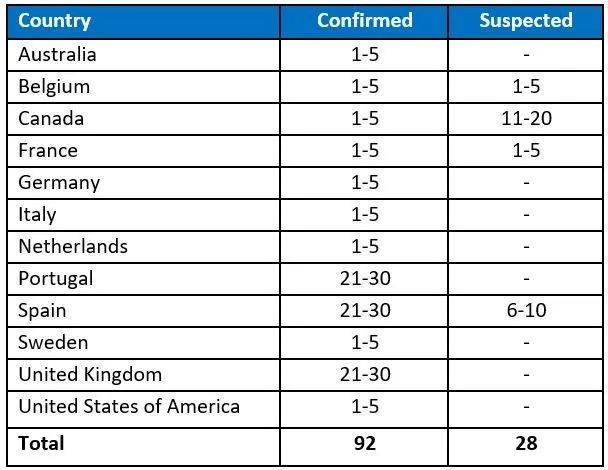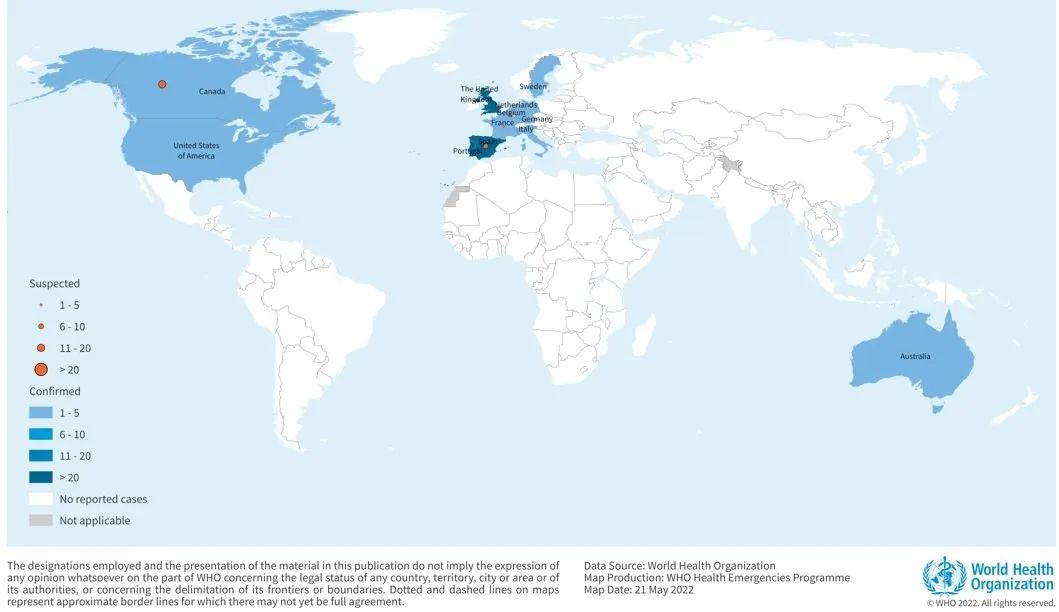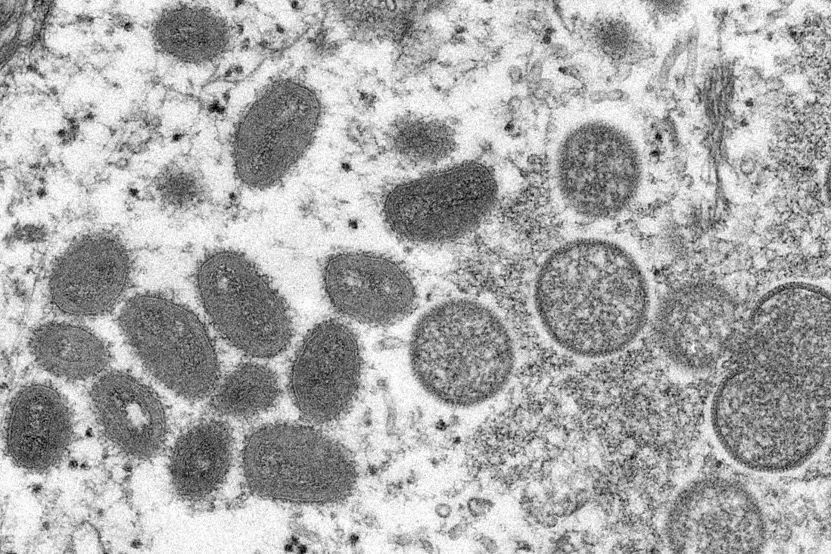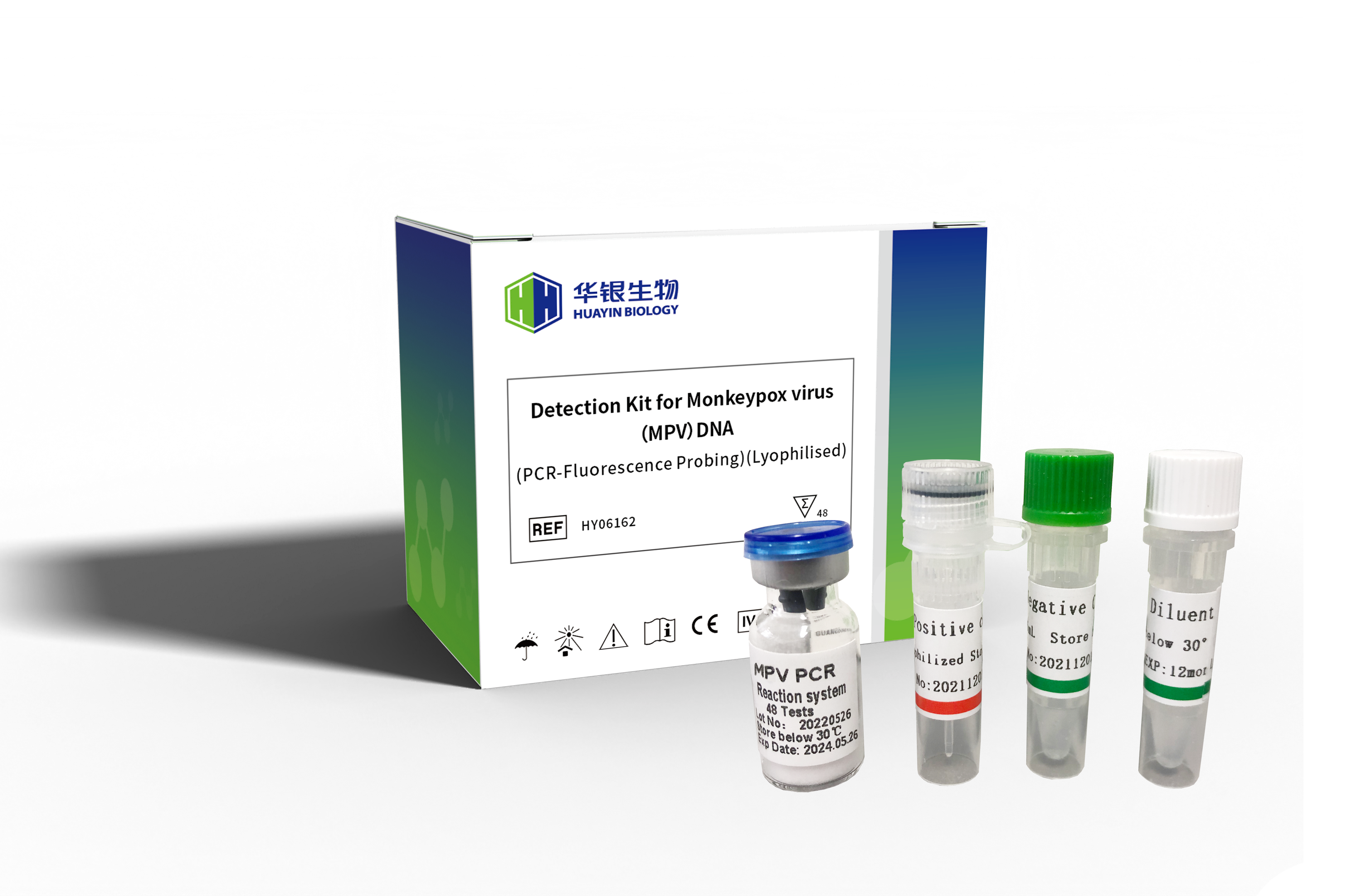HUAYINBIO Monkeypox Virus Real-time PCR kit obtained EU CE certification!
As of 13:00 on 21 May, 92 laboratory-confirmed cases and 28 suspected monkeypox cases under investigation have been reported to WHO from 12 non-MPV-endemic Member States in the three WHO regions (Table 1, Figure 1). Epidemiological investigations are ongoing, however, the cases reported to date have no established travel links to endemic areas, and no related deaths have been reported from related cases.
Table 1. Monkeypox cases reported to WHO in non-endemic countries from 13 to 21 May 2022 at 13:00.


Figure 1. Geographical distribution of confirmed and suspected monkeypox cases in non-endemic areas from 13 to 21 May 2022 at 13:00. (Source: WHO official website)
All cases with samples confirmed by PCR were determined to be infected with the West African clade. The detection of confirmed and suspected cases of monkeypox without direct travel links to endemic areas is a highly unusual event, and surveillance in non-endemic areas has been limited but is now expanding. Available information suggests that human-to-human transmission is occurring between people who have had close physical contact with symptomatic cases, with the potential for additional cases and further transmission in the countries currently reporting cases and in other Member States.
(Monkeypox has been endemic in Benin, Cameroon, Central African Republic, Democratic Republic of Congo, Gabon, Ghana (found in animals only), Côte d'Ivoire, Liberia, Nigeria, Republic of Congo, Sierra Leone, and South Sudan.)
Monkeypox is a viral zoonotic disease (A virus that spreads from animals to humans) with symptoms very similar to those seen in the past in smallpox patients. It is caused by a monkeypox virus belonging to the genus Orthopoxvirus in the family Poxviridae, which has two clades: the West African clade and the Congo Basin (Central Africa) clade.
The name monkeypox stems from the initial discovery of the virus in monkeys by a Danish laboratory in 1958 and the first human case in 1970 in the Democratic Republic of Congo.

Figure 2. 2003 electron microscope image of the US Centers for Disease Control and Prevention showing an egg-like mature monkeypox virus.
Monkeypox can spread to people when people have physical contact with infected animals.
Monkeypox patients are contagious when they develop symptoms (usually lasting 2-4 weeks), and human-to-human transmission is due to close physical contact (including sexual contact) with symptomatic patients, especially those infected Pus, blood, or exudate from broken skin, contact with virus-contaminated items such as clothing, bedding, towels, or utensils can lead to infection. In addition, oral ulcers and mucosal lesions are also contagious, which means that the virus can be transmitted through saliva.
Huayin Biology has been serving the diagnosis and prevention and control of infectious diseases for a long time, responded quickly and started technical research, and carried out the research and development of monkeypox virus nucleic acid detection kits in the first time.
With the unremitting efforts of researchers, the Detection Kit for Monkeypox virus(MPV)DNA (PCR Fluorescence Probing)( Lyophilised) has been successfully launched, and it has obtained the EU CE access qualification! This means that the kit can be sold in EU countries and countries that recognize EU CE certification.
This kit can detect the nucleic acid fragments in the extracted specific monkeypox virus, realize the qualitative detection of MPV nucleic acid in serum/plasma, throat swab, saliva and other lesion exudate samples, and set up the Internal Control.
The kit adopts real-time fluorescent PCR technology, with short detection time, high specificity and sensitivity, which can quickly identify monkeypox virus and realize early and rapid diagnosis of suspected infection.

Compared with conventional liquid PCR kits, HUAYINBIO's full-component lyophilized monkeypox virus Real-time PCR kit has the following characteristics:
1.Extremely thermally stable:Withstand high temperature of 55 ℃, the shape and performance remain unchanged.
2.Transport at Room temperture:No cold chain is required, and there is no need to store at low temperature before opening, fully releasing the cold storage space.
3.Complete in one step:Lyophilized all components without system configuration, avoiding the loss of highly viscous components such as enzymes.
The "four early" principles of early detection, early diagnosis, early isolation and early treatment are the "golden rules" for dealing with emerging infectious diseases.
SUPPORT TEL:+86 020-3229 0687